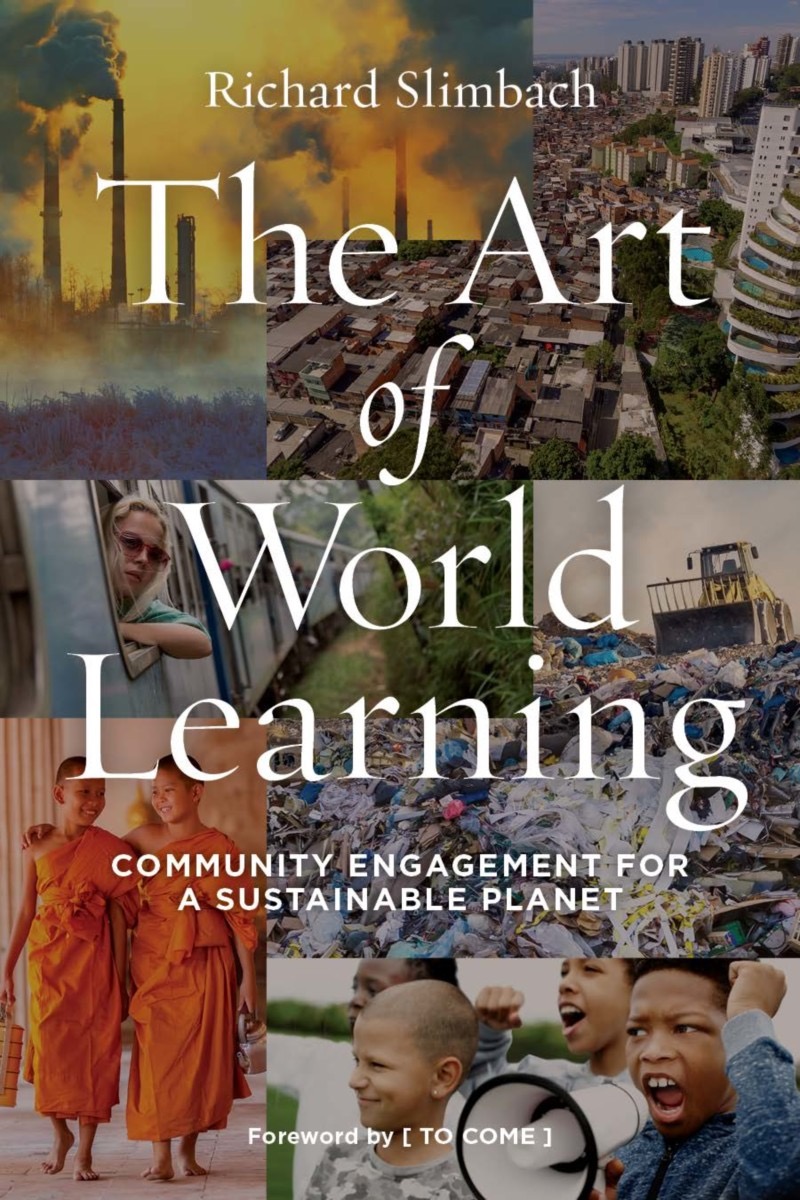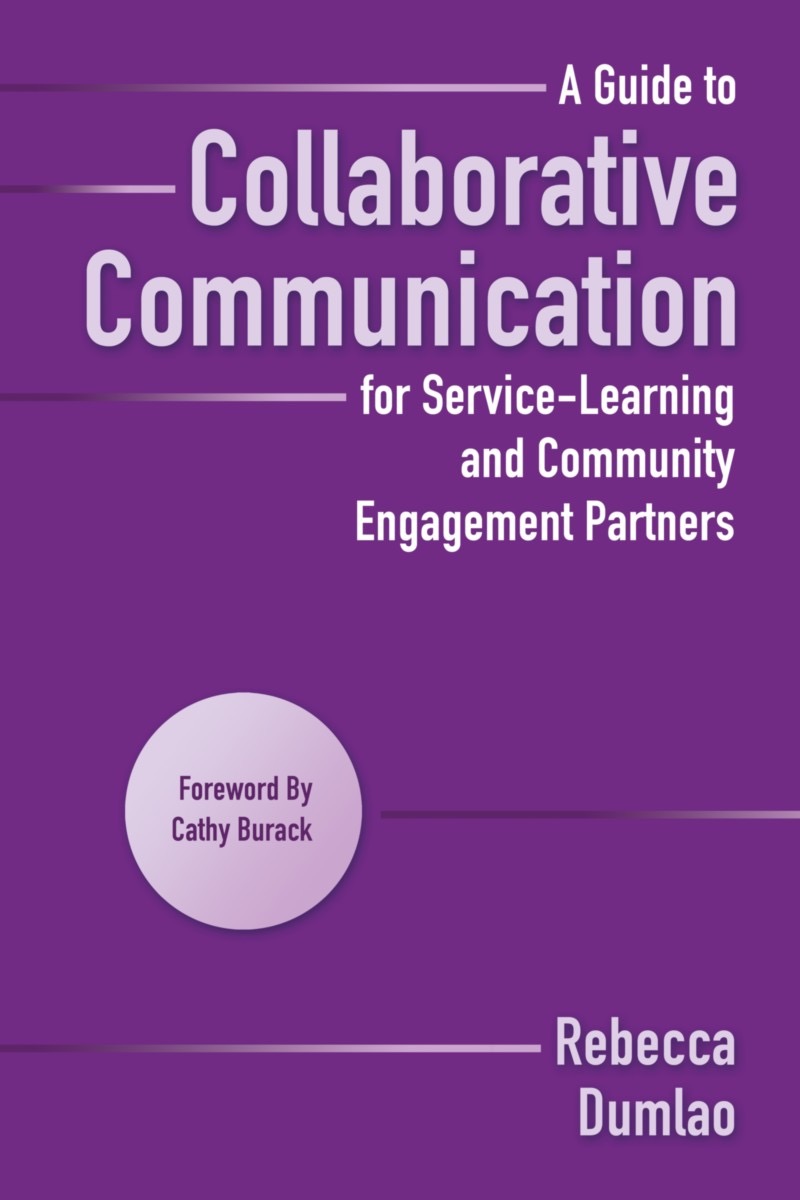community engagement
Select an item by clicking its checkbox
I recently read Valarie Kaur’s remarkable book, See No Stranger: A Memoir and Manifesto of Revolutionary Love. At one point in her story, she describes her struggle to find herself “inside the law” at Yale Law School as a Sikh woman with communal commitments to justice developed in a ...
Date Reviewed: June 22, 2021
As we ask students to truly comprehend this world from the privileged perspective ...
As we ask students to truly comprehend this world from the privileged perspective of the global North, Rich Slimbach asks us to consider two fundamental questions: What and how should we learn? And having learned, for what should we use what we know?
A panoply of pedagogies and methods of inquiry – from study away/abroad and service-based learning to diversity programming, environmental education, and community-based research – aim to develop students who both understand the challenges faced by global communities and act in ways that advance their social and environmental health. What temperaments, social habits, and intellectual abilities will they need to help heal their corner of creation? And what pedagogical perspectives, principles, and procedures can best support them in this creative challenge?
Rich Slimbach argues that transforming student consciousness and life choices requires a global learning curriculum that integrates multi-disciplinary inquiry into the structural causes of problems that riddle the common good, along with mechanisms that bid students to cross borders, to pay attention, and to listen to those unlike themselves.
At its heart, this book proposes a truly transformative approach to community-engaged global learning. (From the Publisher)
Date Reviewed: June 17, 2021
This book offers a conceptual framework of collaborative communication to build and sustain partnerships, recognizing that relationships change over time as the people involved and their circumstances evolve. Collaborative communication uses a repertoire of knowledge and skills that allow partners to make choices that fit their situation or context and to work through differences and challenges as they occur, to include managing conflict and navigating cultural differences. It further takes into account the different means of communication, whether face-to-face, using e-mail, text messaging, or social media. Readers will appreciate the numerous real world examples that illustrate and bring its key concepts to life.
This book is addressed to partners at all levels focused on community engagement and service-learning. It is intended for preparing college students to work more effectively in the community, as well as for workshops for community and campus members who work with service-learning students. It can equally be used in leadership workshops in academic and community settings. Scholars, students, or community members involved in community engaged research will also find useable ideas for their work.
The appendices offer an annotated bibliography of useful resources and provide readers with a repertoire of activities for building a collaborative communication repertoire. (From the Publisher)

The Lives of Campus Custodians Insights into Corporatization and Civic Disengagement in the Academy
Date Reviewed: July 26, 2017
I decided to review this book because of a story one of my professors, Kenneth A.R. Kennedy, told me in college. While he was doing his dissertation research at a university in India, he learned the most not from the esteemed faculty, but from an “untouchable” custodian. Similarly, in the preface to this book, Peter Magolda describes Juanita “Pat” Denton, the head custodian of the residence hall Magolda was directing for his first full-time job, as his mentor: “I learned that custodians knew as much, if not more, about the residents and the condition of the residence hall than I did” (xix). The invaluable lessons he learned from Pat, combined with frustration that higher education scholars have virtually ignored custodians as subjects worthy of study, led Magolda, a professor emeritus of educational leadership at Miami University, to write The Lives of Campus Custodians.
Magolda combines more than a year of participant observation, ethnographic interviews, and literature review to give us a valuable glimpse into what daily life is like for custodians on two different college campuses. I especially enjoyed the many tell-it-like-it-is quotes from custodians that Magolda includes, such as this one from George: “In 1974, HU was like a new world for me. . . . [Recently] I heard that the president thought the wages here were comparable with other jobs in the region. Comparable to what? They [new custodians] are still starting off at $9.35 an hour. And health care premiums continue to rise. . . . It’s not much higher than minimum wage. The university mismanages its budget, and custodians have to pay the price” (107). Such first-hand observations highlight the usually hidden impacts of cost-cutting measures and other corporate managerial practices on campus custodians, many of whom do not earn a living wage, and who, like Samuel, have to watch their money so carefully that he will only buy his mother her favorite kind of cake for her birthday if it is on sale (71).
The book is also eye-opening about “community engagement,” and offers new ways to think about it. I teach a service-learning class every spring and have helped lead the faculty advisory group for our Office for Community Engagement. Yet until reading The Lives of Campus Custodians, I had never thought about having our students engage with an important but largely invisible community: the low-wage staff working at our university. As Magolda thoughtfully puts it: “Typically, higher education civic engagement involves working with communities outside the university, such as service-learning excursions to address societal ills. Yet the findings from this study suggest that subcultures within universities are equally in need of civic revitalization” (173). Moreover, Magolda challenges readers to consider, “Why does civic engagement by those on the margins, such as custodians, seem odd?” (188; Magolda provides several examples of civic engagement by custodians in the book).
Toward the end of the book, Magolda offers a series of concrete suggestions for how to improve matters for both custodians and the university, directed at administrators, supervisors, students, faculty, and custodians themselves. These range from “sponsoring professional development workshops that provide custodians with essential human relations and communication skills to share their wisdom with the larger campus community” (198) to encouraging custodians to unionize (or find other ways to band together and bargain collectively).
Unfortunately, there are also some serious problems with The Lives of Campus Custodians. First, the book is often quite repetitive, with the same phrases used almost verbatim in subsequent paragraphs (61, for example), and later chapters repeating previous material, even including the same quotes from custodians. Second, the book too often simply summarizes its findings, rather than analyzing them using relevant theoretical frames. For example, given the topic of this book, it seems very strange that structural and symbolic violence, internalized oppression, positionality, and even labor and immigrant history (many of the custodians Magolda interviewed were refugees from Eastern Europe) are never mentioned. Third, the book often feels heavy-handed in its critique of the growing turn toward “corporate managerialism” in contemporary American universities (a trend which I also find deeply disturbing); at times it seems as if Magolda wrote the book more as an opportunity to critique campus corporatization than to illuminate the lives of campus custodians. And fourth, the vast majority of the custodians Magolda interviewed and worked with were White – 99 percent at one campus, and at least 78 percent at the other (18-26). This means that the book has relatively little to say about racial inequality, which is a serious issue for custodians on many campuses (one welcome exception is a spot-on quote about how racial politics affects custodians by self-described “huge-ass Black man” Calvin [104]).

Engaging Higher Education: Purpose, Platforms, and Programs for Community Engagement
Date Reviewed: August 23, 2017
The standard perception of higher education in the United States is that it is only for the elite (or those middle-class folks who are willing to take out massive loans to pay for their education). However, the founding concept behind public higher education was to allow all who wish to earn an advanced degree the opportunity to do so. Obviously, the schema appears to have changed.
Financial considerations, admissions standards, and other limitations can produce obstacles to admission. One way to overcome these obstacles is the Community and Technical College system. This system has flourished as a result of offering skills-based training in a number of readily employable fields. Another way to surmount obstacles to higher education, and the one that is the subject of this review, is through community engagement. Community engagement occurs when an institution of higher learning opens its doors to the general public and seeks to partner with them in providing academic and professional training. Community can occur in one of two ways: the institution can seek partnerships with the public through campus events or community service, or the public can seek partnerships with the institution through fieldwork arrangements or training programs. Obviously, this can also be a two-way street where the institution and the community collaborate in the engagement process.
Welch’s volume is based on the Carnegie Foundation’s significant research study on existing community engagement offices at several major American universities and the conceptual writings on community engagement by John Saltmarsh. Welch outlines the purpose of, platforms for, and programs involved with community engagement. The strength of the volume is Welch’s thorough analysis and systematizing of the Carnegie report. However, the volume promises more than that; it promises to provide practical direction for how schools can connect with their community to implement these platforms and programs. This is where the volume falls short of expectations.
As mentioned previously, this book is quite voluminous when it comes to the analysis and quantification of the Carnegie study. And if it had simply stayed there, this would have been an insightful and thought-provoking volume that naturally leads to two other volumes by the same publisher that appear to be connected (Publically Engaged Scholars edited by Post, Ward, Longo, and Saltmarsh, and Community Partner Guide to Campus Collaborations by Cress, Stokamer, and Kaufman). However, the book also attempts to craft an implementation plan for community engagement. It waffles between institutions partnering with community liaisons to provide internships for human services or business students on the one hand and developing institution-based think-tanks that, through strategic partnerships, craft economic and political policy through instructor-student-sponsor relationships on the other. Ultimately, Welch’s volume becomes a never-ending firehose that could lead to bloated institutions scrambling to keep their doors open or to anemic institutions beaten down by unnecessary feelings of academic and professional inferiority.


